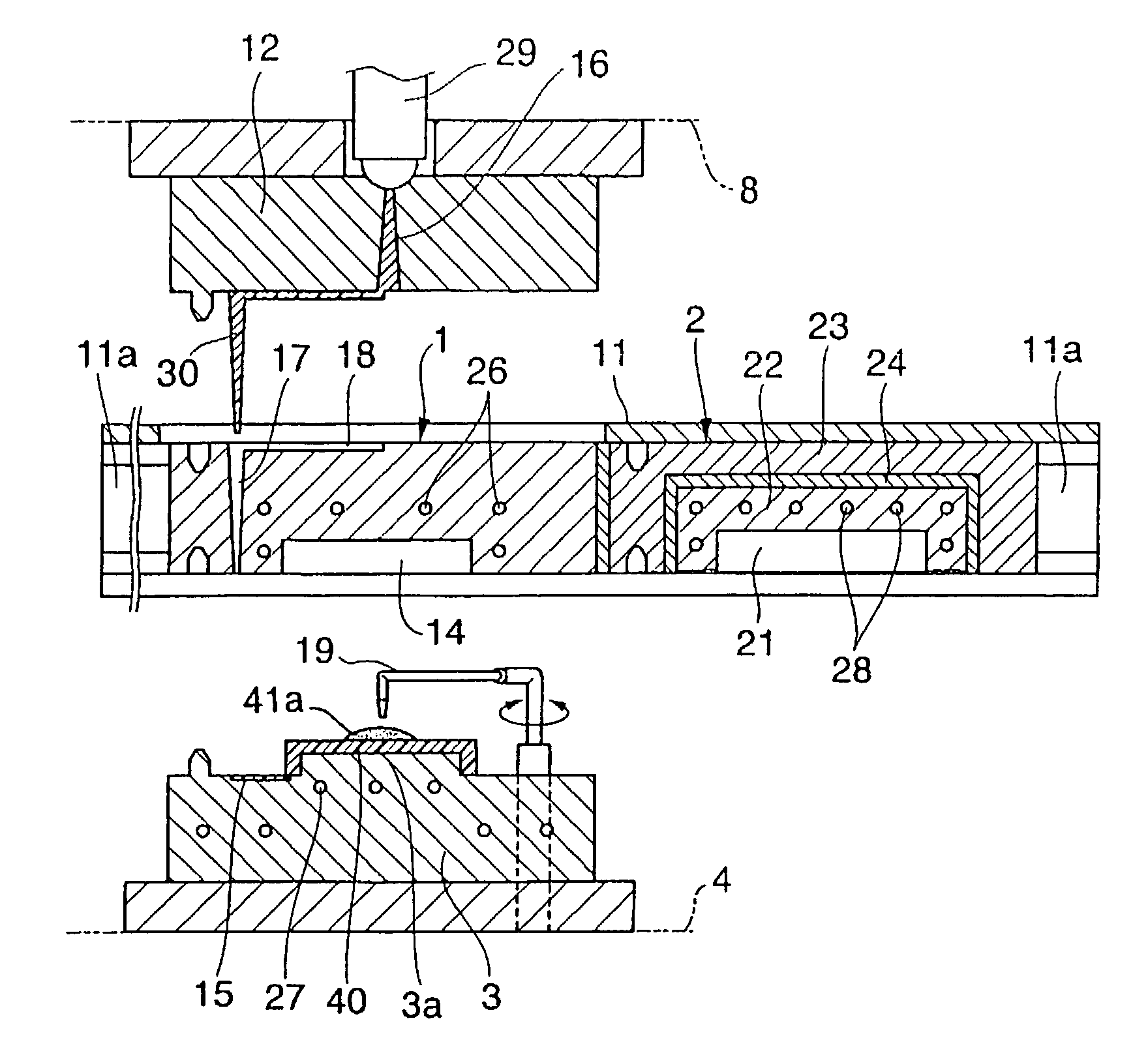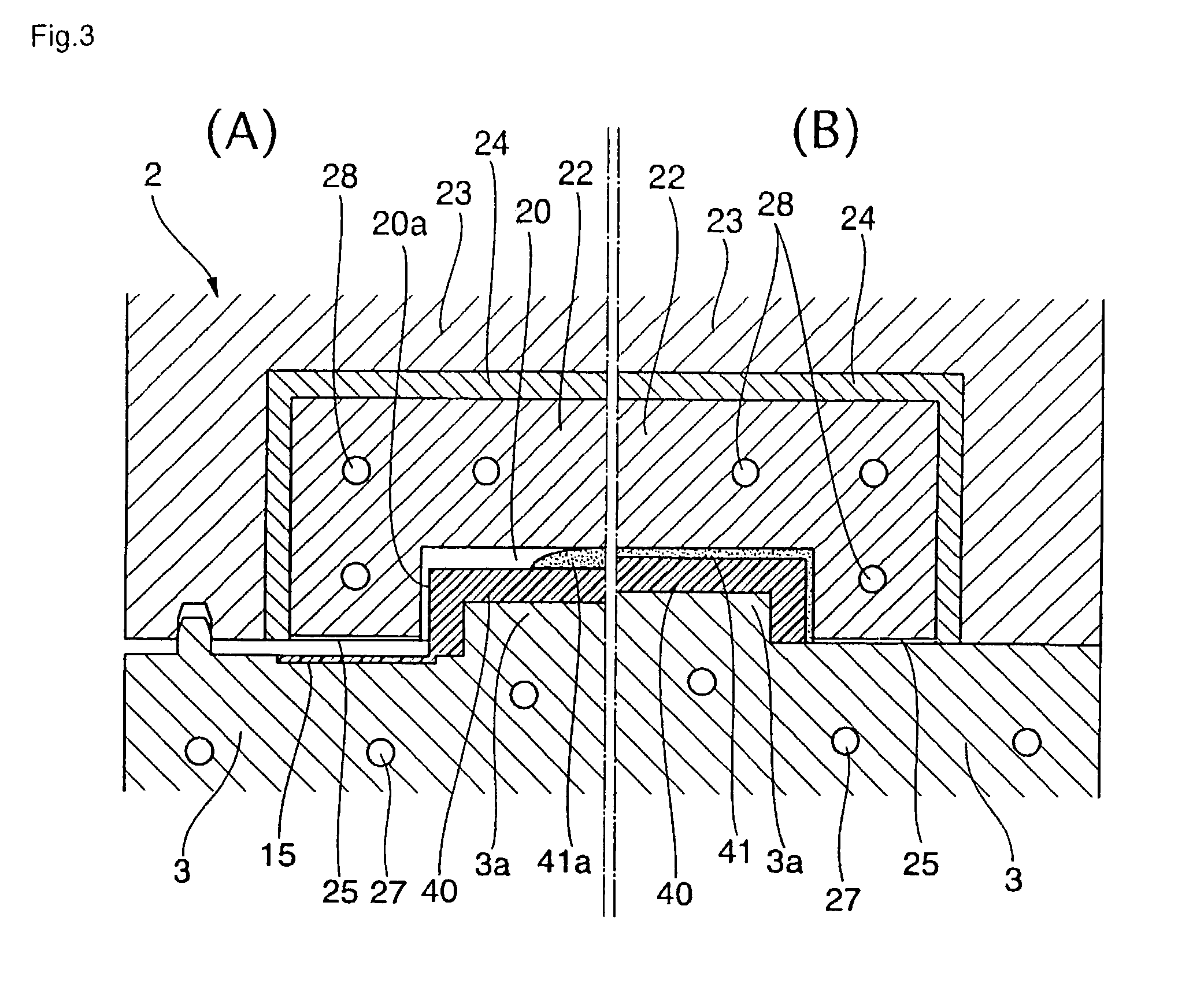Method of injection molding and compressive decoration molding a molded product
a molding method and compressive technology, applied in the field of molding methods, can solve the problems of temperature difference in a limited molding time, difficult to achieve elevation control, and conventional molding methods that employ injection cavity molds for the two types of molding, and achieve excellent decoration conditions and high gloss surfa
- Summary
- Abstract
- Description
- Claims
- Application Information
AI Technical Summary
Benefits of technology
Problems solved by technology
Method used
Image
Examples
example
[0059]
Material of Molded product:PolypropyleneShape of Molded product:Box type, 150 wide ×210 deep × 20 mm highThickness of Molded product:2.5mmThickness of Decorative film:100μmCoating material:KX-1031 (A), Silvermetallic, Trade nameof Nippon Bee Chemical,Co., Ltd., JapanViscosity:20,000 mPa · s / (25° C., 6 rpm)Measured by B-typeviscometer made byTOKIMEC INC., JapanAmount of Supply:6.9cm3Thermosetting Time:60secMolding machine used:TH150-18VSE, Moldslide replacementTemperature in Injection cavity mold:80°C.Temperature in Core mold:80°C.Mold clamping force (Injection molding):126tonfMolding time:60secSpace set in Decoration cavity mold:100μmTemperature in Decoration cavity:120°C.Compression force:20tonfPERFORMANCE RESULTED IN PRODUCTGloss (Reflectivity at 60 degrees):91FF value (Flip-Flop):1.5Initial adhesion (2 mm cross-cut):100 / 100Secondary adhesion after water resistance test:100 / 100Weather resistance (SWOM 1000 H) GR:91ΔE:2.0Mar resistance:Passed
[0060](Mar resistance test: 8 shee...
PUM
| Property | Measurement | Unit |
|---|---|---|
| temperature | aaaaa | aaaaa |
| viscosity | aaaaa | aaaaa |
| thickness | aaaaa | aaaaa |
Abstract
Description
Claims
Application Information
 Login to View More
Login to View More - R&D
- Intellectual Property
- Life Sciences
- Materials
- Tech Scout
- Unparalleled Data Quality
- Higher Quality Content
- 60% Fewer Hallucinations
Browse by: Latest US Patents, China's latest patents, Technical Efficacy Thesaurus, Application Domain, Technology Topic, Popular Technical Reports.
© 2025 PatSnap. All rights reserved.Legal|Privacy policy|Modern Slavery Act Transparency Statement|Sitemap|About US| Contact US: help@patsnap.com



